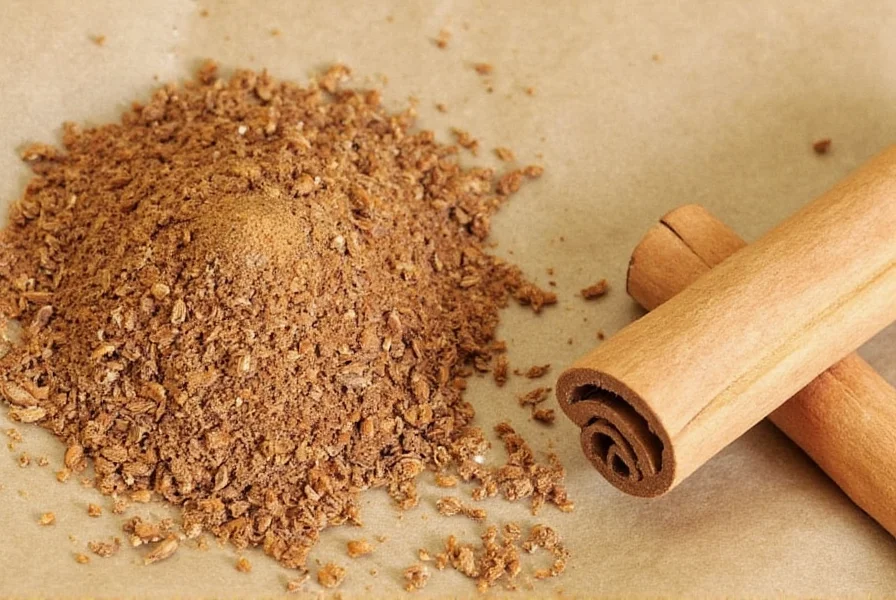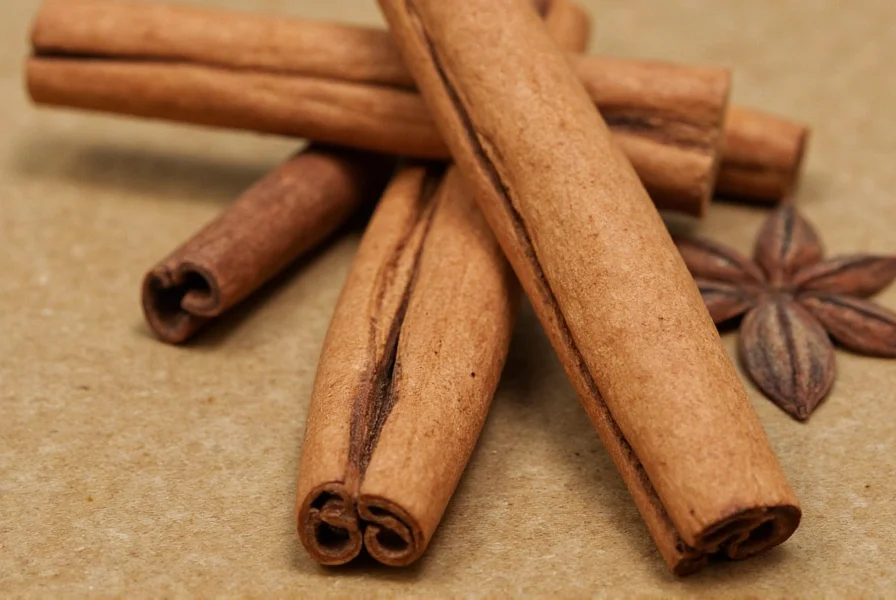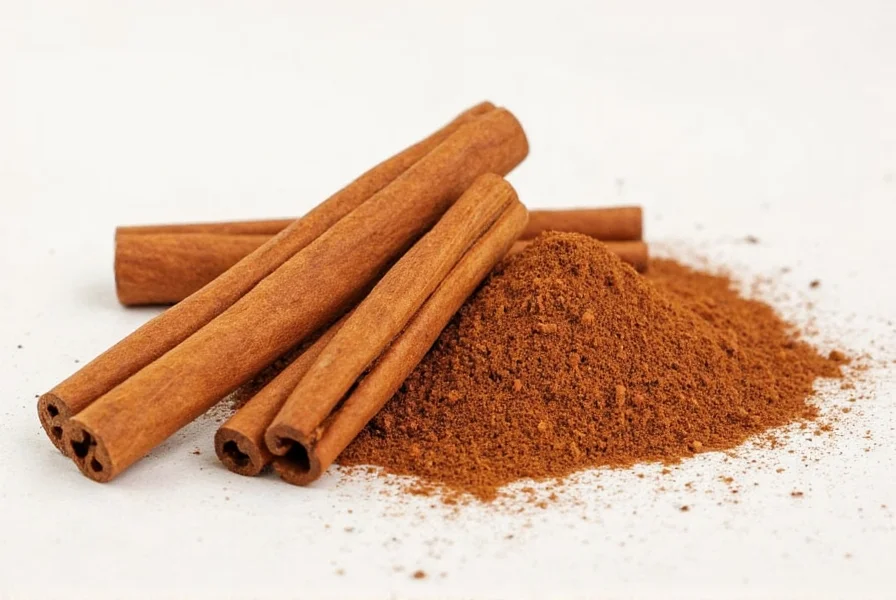Cinnamon isn't just a kitchen staple—it's the product of a fascinating botanical process that transforms tree bark into one of the world's most beloved spices. Understanding how cinnamon grows reveals the intricate relationship between nature and human cultivation that brings this aromatic spice to our tables.
The Cinnamon Tree: Botanical Background
Cinnamon comes from several species within the Cinnamomum genus, part of the Lauraceae family. The most commercially significant varieties include Cinnamomum verum (Ceylon cinnamon) and Cinnamomum cassia (Cassia cinnamon). These evergreen trees feature smooth, grayish bark and elongated leaves that emit a distinctive fragrance when crushed.
Ceylon cinnamon trees typically grow 30-50 feet tall in ideal conditions, while Cassia varieties can reach up to 60 feet. The trees produce small, aromatic flowers followed by purple berries containing a single seed—though commercial cultivation primarily occurs through stem cuttings rather than seeds.

Natural Habitat and Ideal Growing Conditions
Cinnamon trees thrive in tropical climates with specific environmental requirements:
| Factor | Optimal Conditions |
|---|---|
| Temperature | 77-86°F (25-30°C) year-round, no frost |
| Rainfall | 100-150 inches annually with distinct wet/dry seasons |
| Soil Type | Well-drained, sandy loam with high organic matter |
| pH Level | 4.5-5.5 (slightly acidic) |
| Elevation | Sea level to 3,000 feet |
These conditions are naturally found in regions like Sri Lanka (for Ceylon cinnamon), Indonesia, China, Vietnam, and India. While cinnamon trees can grow in other tropical areas, the specific terroir significantly affects the spice's quality, flavor profile, and essential oil content.
The Growth Cycle of Cinnamon Trees
Understanding how cinnamon trees develop reveals why the harvesting process works as it does:
- Planting stage: Farmers typically plant stem cuttings rather than seeds to maintain desired characteristics. Cuttings establish roots within 3-4 weeks.
- Establishment phase: For the first 18-24 months, trees focus on root and trunk development without significant branching.
- Coppicing process: After two years, farmers cut the main stem near ground level to stimulate multiple new shoots (called ratoons).
- Shoot development: These new shoots grow rapidly, reaching 6-8 feet in about 12 months—this is when they're ready for harvesting.
- Harvest cycle: After harvesting, the process repeats as new shoots emerge from the stump, creating a sustainable production cycle for 20-30 years.
Commercial Cultivation Process
Successful cinnamon farming follows precise agricultural practices that optimize bark quality:
Land preparation begins with clearing vegetation while maintaining some shade trees, as young cinnamon plants benefit from partial shade. Farmers plant cuttings 3-4 feet apart in rows spaced 6-8 feet apart. During the first year, regular weeding and mulching maintain soil moisture and temperature.
Unlike many crops, cinnamon trees require minimal fertilization when grown in suitable soil. However, organic matter supplementation can enhance growth. Pest management focuses on preventing fungal diseases through proper spacing and drainage, as cinnamon trees are particularly vulnerable to root rot in waterlogged conditions.
Harvesting Cinnamon Bark: The Critical Transformation
The distinctive cinnamon spice forms through a precise harvesting and processing technique:
When shoots reach pencil thickness (about 1-1.5 inches in diameter), farmers harvest them early in the morning when bark separation is easiest. They make vertical cuts through the outer bark at regular intervals, then carefully peel away sections of bark. The magic happens as the inner bark naturally curls into quills while drying in shaded, well-ventilated conditions.
This curling occurs because the inner bark (which becomes cinnamon) dries at a different rate than the outer bark. The characteristic layered structure of cinnamon quills reflects the tree's growth rings. After drying for 4-6 days, workers remove the outer bark layer, leaving the smooth, rolled inner bark that we recognize as cinnamon sticks.

Different Cinnamon Varieties and Their Growth Characteristics
Not all cinnamon grows the same way. The two primary commercial varieties have distinct cultivation requirements:
Ceylon cinnamon (Cinnamomum verum) - Native to Sri Lanka, this "true cinnamon" grows best in coastal regions with consistent humidity. It produces thinner, more delicate bark with multiple fine layers. Ceylon cinnamon trees require more careful management and yield less per acre but produce a sweeter, more complex flavor.
Cassia cinnamon (Cinnamomum cassia) - Primarily grown in China and Indonesia, Cassia is hardier and more productive. It develops thicker, single-layer bark with a stronger, spicier flavor. Cassia trees tolerate slightly cooler temperatures and less consistent rainfall than Ceylon varieties.
Challenges in Cinnamon Cultivation
Despite its tropical origins, cinnamon farming faces several challenges that affect how cinnamon grows commercially:
- Climate vulnerability: While adapted to tropical conditions, cinnamon trees suffer during extended droughts or unseasonal temperature drops
- Disease susceptibility: Fungal infections like die-back disease can devastate plantations if not managed properly
- Labor intensity: The harvesting and processing remain largely manual, requiring skilled workers for optimal quality
- Market pressures: Competition between Ceylon and Cassia producers affects cultivation practices and sustainability efforts
Modern agricultural research focuses on developing disease-resistant varieties and more efficient harvesting techniques while maintaining the quality characteristics that define premium cinnamon.
From Tree to Table: The Journey Continues
Understanding how cinnamon grows connects us to centuries of agricultural tradition. Each cinnamon stick represents a carefully managed growth cycle, precise harvesting timing, and skilled craftsmanship. Whether you're using Ceylon's delicate quills or Cassia's robust sticks, you're experiencing the culmination of a remarkable botanical process that transforms tree bark into one of the world's most versatile spices.
As consumer awareness grows about the differences between cinnamon varieties and their cultivation methods, the industry continues evolving toward more sustainable practices that protect both the environment and the communities that have cultivated cinnamon for generations.
How long does it take for a cinnamon tree to produce harvestable bark?
Cinnamon trees require approximately two years of growth before the first harvest. Farmers cut the main stem after this period to stimulate new shoots, which reach harvestable size (about pencil thickness) in an additional 12 months. The entire process from planting to first usable bark takes roughly 3 years.
Can cinnamon trees be grown outside tropical regions?
Cinnamon trees require consistently warm, humid conditions and cannot survive frost. While they might grow in protected greenhouse environments outside tropical zones, they won't produce quality bark for spice production. Commercial cultivation remains limited to tropical regions between 25°N and 25°S latitude where temperatures stay above 68°F year-round.
What makes Ceylon cinnamon different from Cassia in terms of growth?
Ceylon cinnamon (Cinnamomum verum) grows best in coastal Sri Lankan conditions with consistent humidity, producing thinner, multi-layered bark. Cassia cinnamon (Cinnamomum cassia) is hardier, tolerates slightly cooler temperatures, and produces thicker, single-layer bark. Ceylon trees require more careful management and yield less per acre but produce a sweeter flavor profile compared to the stronger, spicier Cassia.
Why do farmers cut cinnamon trees back to the ground?
This practice, called coppicing, stimulates the growth of multiple new shoots from the stump. These new shoots produce the highest quality bark for spice production. The inner bark from these young, rapidly growing shoots separates more easily and has the ideal thickness and oil content for premium cinnamon. This sustainable practice allows a single tree to produce harvestable shoots for 20-30 years.
How is cinnamon bark processed after harvesting?
After harvesting, workers make vertical cuts in the outer bark of young shoots, then carefully peel away sections. The inner bark naturally curls into quills as it dries in shaded, well-ventilated conditions over 4-6 days. Once dry, workers remove the outer bark layer, leaving the smooth, rolled inner bark. These quills may be sold as sticks or ground into powder, with higher grades consisting of the innermost bark layers.











 浙公网安备
33010002000092号
浙公网安备
33010002000092号 浙B2-20120091-4
浙B2-20120091-4